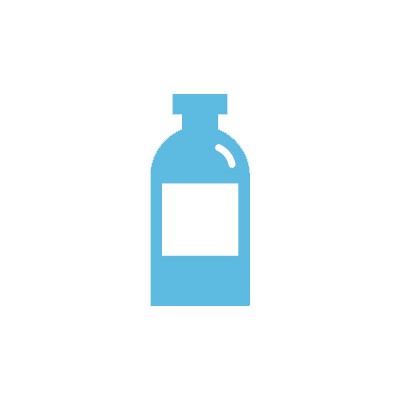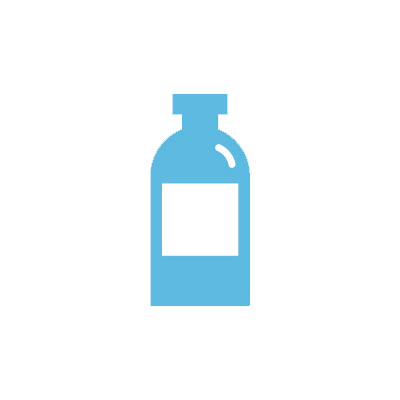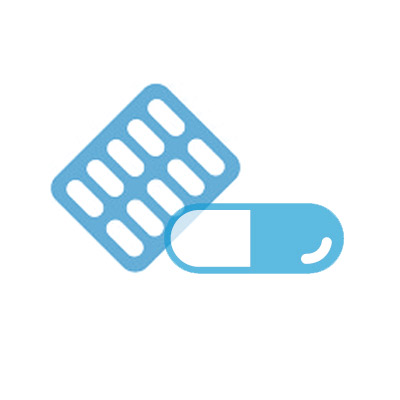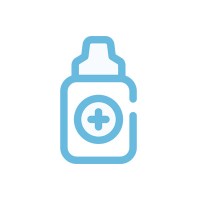
✔ 100% Authentic Product
👁️ Currently Viewing 1401
Navacef Pediatric Drops – (125 mg/1.25 ml-15 ml bottle)/pcs
15ml Drop.
Generic Name: Cefaclor Monohydrate 100 mg/ml
Discount
Price: ৳ 120
MRP:
৳
125.82
5%
Off

100% Genuine Products, Guaranteed

Safe & Secure Payments, Always

Fast, Secure & Efficient Delivery

Proper Packaging
 Cash on Delivery - All over Bangladesh
Cash on Delivery - All over Bangladesh Regular Delivery - 12-24 Hours, Dhaka City* Charge Tk.39-59
Regular Delivery - 12-24 Hours, Dhaka City* Charge Tk.39-59 Regular Delivery - 24-48 Hours, Other Cities* Charge Tk.99-110
Regular Delivery - 24-48 Hours, Other Cities* Charge Tk.99-110
 ফ্রি ডেলিভারিঃ - ৯৯৯ টাকা+ অর্ডারে, ঢাকা
শহরে
ফ্রি ডেলিভারিঃ - ৯৯৯ টাকা+ অর্ডারে, ঢাকা
শহরে ফ্রি ডেলিভারিঃ - ২৯৯৯ টাকা+ অর্ডারে, ঢাকার
বাহিরে
ফ্রি ডেলিভারিঃ - ২৯৯৯ টাকা+ অর্ডারে, ঢাকার
বাহিরে
100% Genuine Products, Guaranteed
Safe & Secure Payments, Always
Fast, Secure & Efficient Delivery
Proper Packaging
 Cash on Delivery - All over Bangladesh
Cash on Delivery - All over Bangladesh Regular Delivery - 12-24 Hours, Dhaka City* Charge Tk.39-59
Regular Delivery - 12-24 Hours, Dhaka City* Charge Tk.39-59 Regular Delivery - 24-48 Hours, Other Cities* Charge Tk.99-110
Regular Delivery - 24-48 Hours, Other Cities* Charge Tk.99-110 ফ্রি ডেলিভারিঃ - ৯৯৯ টাকা+ অর্ডারে, ঢাকা
শহরে
ফ্রি ডেলিভারিঃ - ৯৯৯ টাকা+ অর্ডারে, ঢাকা
শহরে ফ্রি ডেলিভারিঃ - ২৯৯৯ টাকা+ অর্ডারে, ঢাকার
বাহিরে
ফ্রি ডেলিভারিঃ - ২৯৯৯ টাকা+ অর্ডারে, ঢাকার
বাহিরে
✅ Description:
Introduction
Navacef is an antibiotic medicine used to treat bacterial infections in your body. It is effective in infections of the lungs (e.g. pneumonia), ear, throat, nasal sinus, urinary tract, skin, soft tissues, bones, and joints. It is also used to prevent infections during surgery. Navacef may be taken with or without food. You should take it regularly at evenly spaced intervals as per the schedule prescribed by your doctor. Taking it at the same time every day will help you to remember to take it. The dose will depend on what you are being treated for, but you should always complete a full course of this antibiotic as prescribed by your doctor. Do not stop taking it until you have finished, even when you feel better. If you stop taking it early, some bacteria may survive and the infection may come back. It will not work for viral infections such as flu or the common cold. Using any antibiotic when you do not need it can make it less effective for future infections. The most common side effects of this medicine include rash, vomiting, nausea, diarrhea, and changes in liver function tests. These are usually mild but let your doctor know if they bother you or last more than a few days. Before using it, you should tell your doctor if you are allergic to any antibiotics or have any kidney or liver problems. You should also let your doctor know all other medicines you are taking as they may affect, or be affected by this medicine. Pregnant and breastfeeding mothers should consult their doctor before using it. Avoid consuming alcohol while taking this medicine as it may cause unpleasant side effects like nausea, vomiting, sweating, anxiety, and palpitations.
Uses of Navacef
- Bacterial infections
Side effects of Navacef
Common
- Rash
- Vomiting
- Allergic reaction
- Nausea
- Injection site reaction
- Increased liver enzymes
- Diarrhea
How to use Navacef
Take this medicine in the dose and duration as advised by your doctor. Swallow it as a whole. Do not chew, crush or break it. Navacef may be taken with or without food, but it is better to take it at a fixed time.
How Navacef works
Navacef is an antibiotic. It kills bacteria by preventing them from forming the bacterial protective covering (cell wall) which is needed for them to survive.
What if you forget to take Navacef?
If you miss a dose of Navacef, take it as soon as possible. However, if it is almost time for your next dose, skip the missed dose and go back to your regular schedule. Do not double the dose.

Quick Tips
- Your doctor has prescribed Uniclor 375mg Tablet MR to cure your infection and improve your symptoms.
- Do not skip any doses and finish the full course of treatment even if you feel better. Stopping it early may make the infection come back and harder to treat.
- Discontinue Uniclor 375mg Tablet MR and inform your doctor immediately if you get a rash, itchy skin, swelling of face and mouth, or have difficulty in breathing.
- Diarrhea may occur as a side effect but should stop when your course is complete. Inform your doctor if it does not stop or if you find blood in your stools.
- Take it with food to avoid an upset stomach.
- Avoid consuming alcohol while taking Uniclor 375mg Tablet MR as it may cause increased side effects.

Brief Description
Indication
Pneumonia, Meningitis, Peritonitis, Otitis media, Septicaemia, Biliary-tract infections, Urinary-tract infections, Skin and skin structure infections, Upper and lower respiratory tract infections, Pharyngitis, Tonsillitis
Administration
May be taken with or without food.
Adult Dose
Oral Urinary tract infections, Upper and lower respiratory tract infections, Skin infections, Otitis media Adult: As monohydrate: 250-500 mg every 8 hr. Max: 4 g daily.
Child Dose
Oral Urinary tract infections, Upper and lower respiratory tract infections, Skin infections, Otitis media Child: PO 20–40 mg/kg/day, max 1 g/day q12h 1-5 yr: 125 mg tid, >5 yr: 250 mg tid. Suspension & Paediatric Drops: 1 month - 1 year 2.5 ml t.i.d. 0.625 ml t.i.d 1 year - 5 year 5 ml t.i.d. 1.25 ml t.i.d over 5 years 10 ml t.i.d 2.5 ml t.i.d
Renal Dose
Renal Impairment CrCl: 10-50 mL/min: Half to full dose CrCl: <10 mL/min: Half dose
Contraindication
Known hypersensitivity to cephalosporins.
Mode of Action
Cefaclor binds to one or more of the penicillin-binding proteins (PBPs) which inhibits the final transpeptidation step of peptidoglycan synthesis in bacterial cell wall, thus inhibiting biosynthesis and arresting cell wall assembly resulting in bacterial cell death. It has bactericidal activity against gm-ve bacteria including E. coli, S. pneumoniae, N. gonorrhoea, P. mirabilis and H. influenzae.
Precaution
Severe renal impairment; history of allergy to penicillin; pregnancy, lactation. Lactation: enters breast milk; use with caution
Side Effect
1-10% Diarrhea (3%),Increased transaminases (3%),Eosinophilia (2%),Moniliasis (2%),Vaginitis (2%),Rash (maculopapular, erythematous, or morbiliform) (1-2%) <1% Stevens-Johnson syndrome,Pseudomembranous colitis,Nausea,Vomiting,Anemia,Neutropenia,Jaundice Potentially Fatal: Anaphylactic reaction; pseudomembranous colitis.
Pregnancy Category Note
Pregnancy No adequate and well-controlled studies in pregnant women Because animal reproduction studies are not always predictive of human response, cefaclor should be used during pregnancy only if necessary Lactation Effect on nursing infants is unknown; exercise caution when cefaclor is administered to a nursing woman Extended-release tablets No studies in lactating women performed; small amounts of cefaclor (?0.21 mcg/mL) detected in human milk following administration (single 500-mg dose of cefaclor extended-release tablets)
Interaction
May enhance the nephrotoxic effect of aminoglycosides. May diminish the therapeutic effect of BCG, typhoid vaccine and Na picosulfate. Concomitant use w/ warfarin may increase prothrombin time. Probenecid inhibits renal excretion of cefaclor.
⚠️Disclaimer:
At ePharma, we’re committed to providing accurate and accessible health information. However, all content is intended for informational purposes only and should not replace medical advice from a qualified physician. Please consult your healthcare provider for personalized guidance. We aim to support, not substitute, the doctor-patient relationship.










